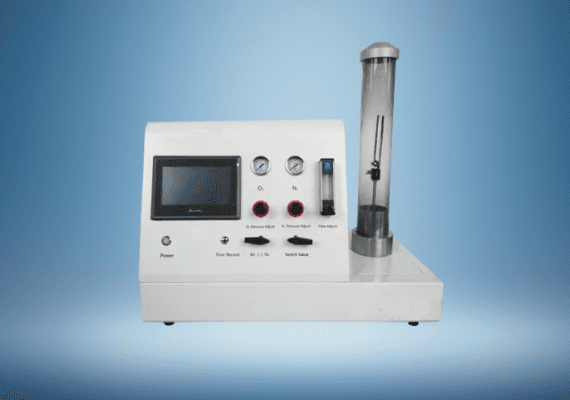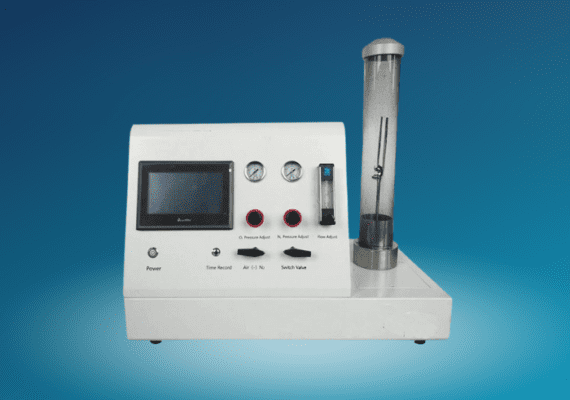
What is ASTM D2863?
ASTM D2863, officially titled “Standard Test Method for Measuring the Minimum Oxygen Concentration to Support Candle-Like Combustion of Plastics (Oxygen Index),” is a well-established standard used to evaluate how easily a material can be ignited and sustained in a flame. The test is frequently referred to as the “Oxygen Index” or “Limiting Oxygen Index” (LOI) test.
Test Overview:
Oxygen Index Testing evaluates the combustion properties of a material by subjecting it to a controlled flow of oxygen and nitrogen in a vertical chamber. The test specimen is ignited from the top, and the mixture of gases is adjusted to determine the minimum oxygen concentration that will just sustain combustion. This provides valuable information about the material’s fire behavior and helps classify its flammability level.
Key Terminology:
Test Apparatus and Procedure:
The apparatus used for the ASTM D2863 test consists of a vertical glass column where the material sample is placed. Controlled amounts of nitrogen and oxygen are flowed through the column, and the sample is ignited at the top.
Applications of Oxygen Index Testing:
This test is used across a variety of industries where material flammability is a concern:
Interpreting the Results:
